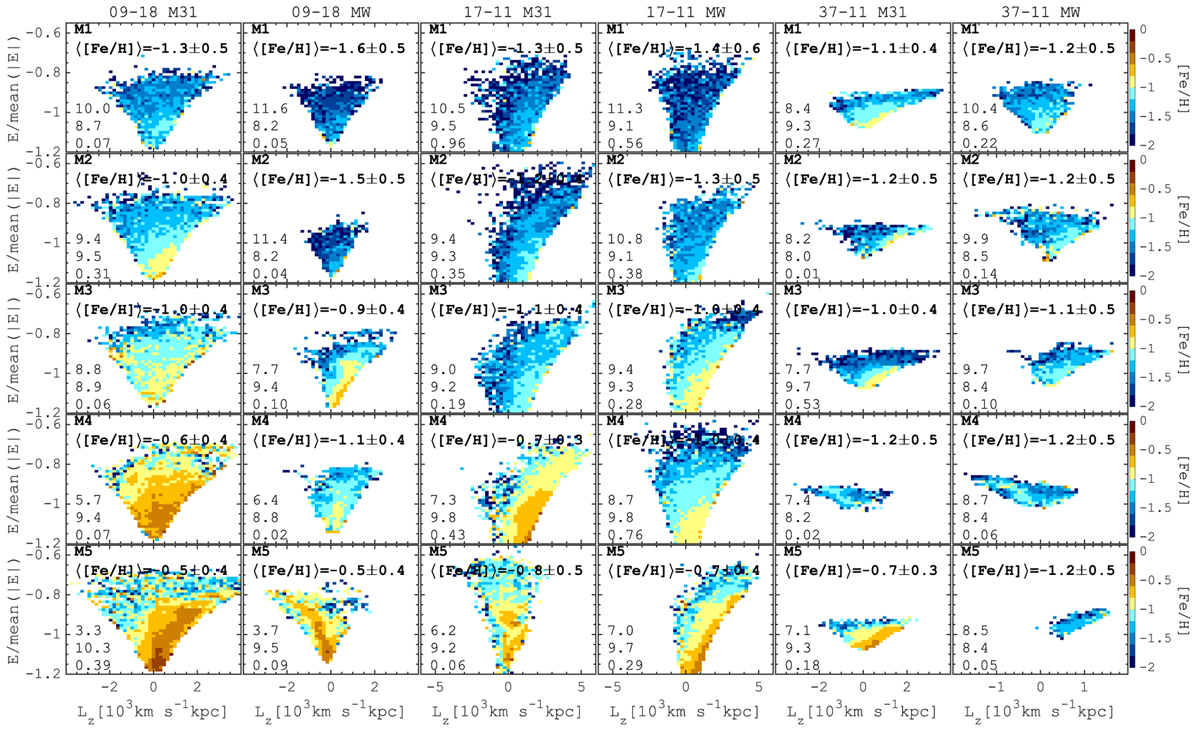Fig. 8.

Download original image
Mean metallicity distribution for five of the most significant merger debris in E − Lz coordinates. Different HESTA simulations are shown in different columns. The merger accretion time (Gyr), total stellar mass of the merger debris at the time of the merger (log10(M*/M⊙)), and the stellar mass ratio (μ*) relative to the main M31/MW progenitor at the time of the merger are given in the bottom of each panel. The mean metallicity of debris associated with the given merger, together with its standard deviation, are shown in each panel. In most cases, individual merger debris show [Fe/H] gradients, where the most metal-rich stars, formed in the centers of accreting galaxies, have the lowest energies. Meanwhile, low-[Fe/H] stars formed in the outer regions of dwarf galaxies accreted first and, thus, have higher energy inside the host M31/MW galaxies.
Current usage metrics show cumulative count of Article Views (full-text article views including HTML views, PDF and ePub downloads, according to the available data) and Abstracts Views on Vision4Press platform.
Data correspond to usage on the plateform after 2015. The current usage metrics is available 48-96 hours after online publication and is updated daily on week days.
Initial download of the metrics may take a while.


